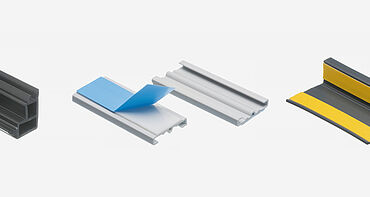A Comprehensive Guide to the Refine and Advantages of Plastic Extrusion
In the huge world of manufacturing, plastic extrusion arises as a highly effective and important procedure. Altering raw plastic into continuous accounts, it accommodates a plethora of sectors with its exceptional convenience. This guide aims to clarify the detailed steps entailed in this technique, the kinds of plastic suitable for extrusion, and the game-changing advantages it offers the industry. The ensuing conversation guarantees to unravel the real-world effects of this transformative process.
Comprehending the Essentials of Plastic Extrusion
While it might show up complex at very first glimpse, the procedure of plastic extrusion is fundamentally easy. The process begins with the feeding of plastic product, in the kind of powders, pellets, or granules, into a heated barrel. The designed plastic is then cooled down, strengthened, and cut right into desired lengths, finishing the process.
The Technical Refine of Plastic Extrusion Explained

Types of Plastic Suitable for Extrusion
The selection of the best type of plastic is a crucial aspect of the extrusion process. Various plastics use special homes, making them more suited to certain applications. Polyethylene, as an example, is typically used because of its affordable and easy formability. It uses excellent resistance to chemicals and moisture, making it suitable for products like tubes and containers. Polypropylene is another preferred choice due to its high melting point and resistance to fatigue. For even more durable applications, polystyrene and PVC (polyvinyl chloride) are usually chosen for their strength and longevity. These are common options, the option eventually depends on the specific requirements of the product being produced. Comprehending these plastic kinds can significantly boost the extrusion procedure.
Comparing Plastic Extrusion to Various Other Plastic Forming Techniques
Understanding the types of plastic appropriate for extrusion paves the way for a broader conversation on exactly how plastic extrusion stacks up versus various other plastic developing techniques. Plastic extrusion is unmatched when it comes to developing continual profiles, such as pipelines, gaskets, and seals. It additionally permits for a regular cross-section along the size of the product.
Key Benefits of Plastic Extrusion in Production
In the realm of production, plastic extrusion uses numerous substantial advantages. One significant advantage is the cost-effectiveness of the process, that makes it an economically attractive manufacturing method. Furthermore, this method supplies exceptional item adaptability and improved production rate, thus enhancing general have a peek at this website manufacturing performance.
Cost-efficient Production Method
Plastic extrusion leaps to the leading edge as a cost-effective production method in manufacturing. This procedure attracts attention for its capacity to produce high quantities of material swiftly and successfully, giving makers with considerable cost savings. The key expense advantage is the capability Get More Information to utilize more economical resources. Extrusion utilizes polycarbonate products, which are much less pricey compared to steels or ceramics. Even more, the extrusion process itself is fairly straightforward, lowering labor costs. In addition, plastic extrusion calls for much less power than traditional production methods, adding to lower functional prices. The procedure additionally reduces waste, as any kind of defective or excess materials can be reused and reused, supplying one more layer of cost-effectiveness. Generally, the monetary advantages make plastic extrusion a very appealing choice in the manufacturing market.

Superior Product Versatility
Past the cost-effectiveness of plastic extrusion, one more substantial advantage in making lies in its superior item adaptability. This makes plastic extrusion an ideal solution for industries that need personalized plastic components, such as auto, building, and packaging. In essence, plastic extrusion's item flexibility promotes technology while boosting operational performance.
Boosted Manufacturing Rate
A considerable benefit of plastic extrusion lies in its boosted manufacturing rate. Couple of other production processes can match the rate of plastic extrusion. Additionally, the capability to keep constant high-speed manufacturing without sacrificing item high quality sets plastic extrusion apart from website link other methods.
Real-world Applications and Effects of Plastic Extrusion
In the realm of production, the technique of plastic extrusion holds extensive significance. The economic advantage of plastic extrusion, mostly its affordable and high-volume outcome, has actually transformed production. The market is constantly aiming for technologies in recyclable and eco-friendly materials, suggesting a future where the advantages of plastic extrusion can be maintained without endangering ecological sustainability.
Final thought
Finally, plastic extrusion is a effective and extremely reliable technique of changing raw products right into varied items. It provides numerous advantages over various other plastic creating techniques, consisting of cost-effectiveness, high result, marginal waste, and layout flexibility. Its effect is profoundly really felt in various industries such as building and construction, vehicle, and durable goods, making it a critical procedure in today's manufacturing landscape.
Delving much deeper into the technical process of plastic extrusion, it begins with the selection of the proper plastic material. When cooled, the plastic is cut into the needed lengths or wound onto reels if the product is a plastic movie or sheet - plastic extrusion. Contrasting Plastic Extrusion to Various Other Plastic Forming Approaches
Recognizing the kinds of plastic appropriate for extrusion leads the method for a wider discussion on just how plastic extrusion stacks up against various other plastic forming methods. Few other production procedures can match the speed of plastic extrusion.